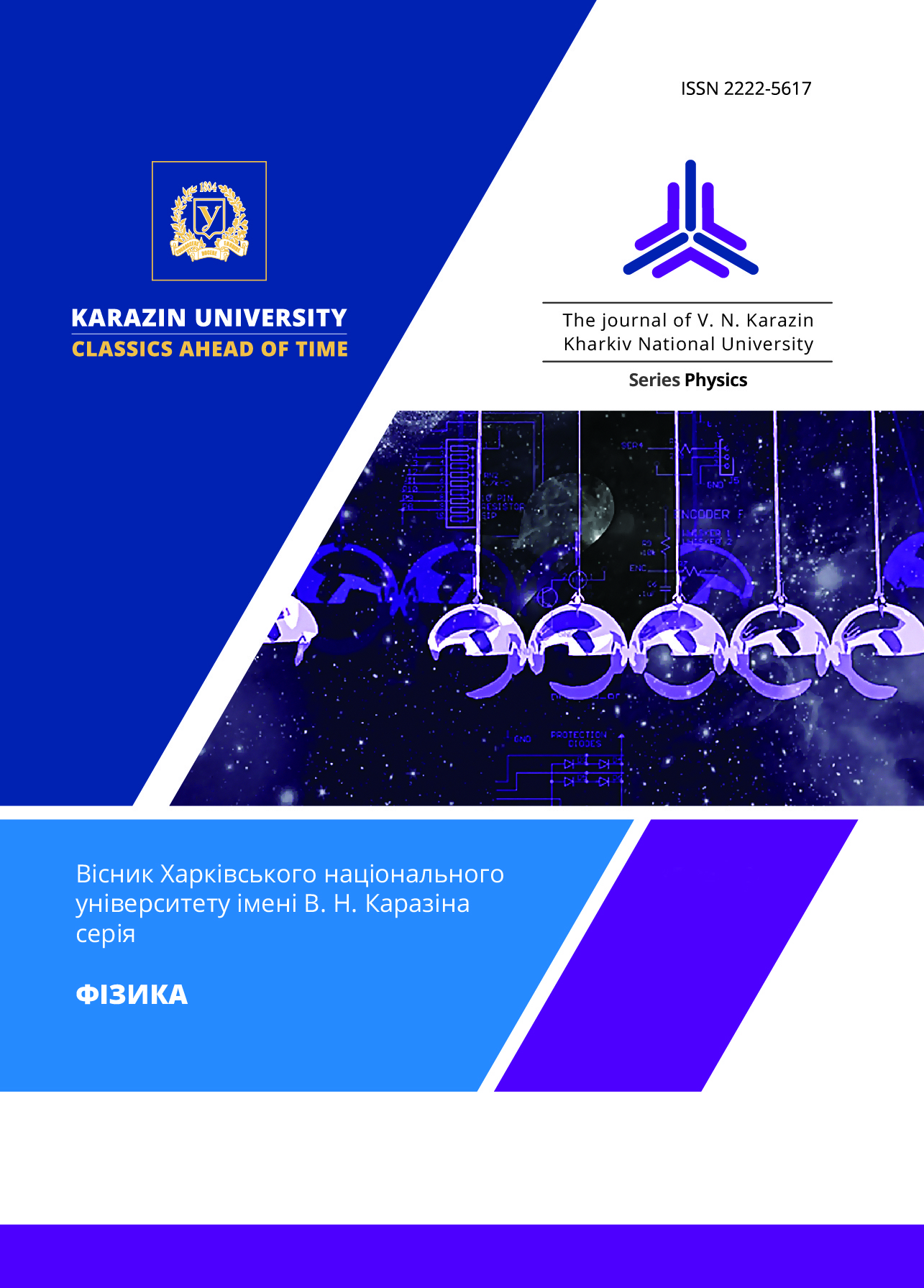Функціональні характеристики гідроксилапатиту після відпалу при високих температурах
Анотація
Досліджено функціональні характеристики зразків гідроксилапатиту, які містять карбонатні домішки в кристалічній решітці після відпалу в інтервалі температур від кімнатної до 1400° C. Показано, що карбонатні домішки у зразках гідроксилапатиту присутні до температури 1000°С. Гідроксилапатит має змішаний АВ-тип карбонатного заміщення. Показано, що всі зразки після відпалу в інтервалі температур від кімнатної до 1400°C містить одну фазу гідроксилапатит. Зразки досягають щільності більше 95% від теоретичної для гідроксилапатиту при температурі 1200°С. При цьому активне ущільнення зразків починається за температур близько 700° C і досягає максимуму при 1280°C. Аналогічний хід демонструє залежність мікротвердості від температури відпалу. Максимальна твердість 5,5ГПа була досягнута у даній роботі на зразках гідрокслапатиту після відпалу при температурі 1100°C. Досліджено механізми спікання зразків за температури 1150°C. Показано, що дифузія при спіканні в досліджуваних зразках здійснюється механізмом поверхневої дифузії, а також через межі зерен в полікристалічних зразках гідроксилапатиту. Досліджено мікроструктуру зразків після відпалу при високих температурах. Показано, що на початковій стадії процесу спікання гідроксилапатиту відбувається активний масоперенос, який при температурі від 1000°С призводить до спікання частинок з утворенням перешийок. Побудовано графік Аренерусу залежності розміру частинок гідроксилапатиту від температури відпалу. Обчислено енергію активації дифузійних процесів у зразках при різних температурах відпалу. Отримані значення склали 36, 83, 5.11 та 11.28 ккал/моль у різних інтервалах відпалу зразків гідроксилапатиту.
Завантаження
Посилання
L.L. Hench. J. Am. Ceram. Soc., 81, 1705 (1998). https://doi.org/10.1111/j.1151-2916.1998.tb02540.x
TSB Narasaraju, DE Phebe. J. Mater. Sci., 31, 1 (1996). https://doi.org/10.1007/BF00355120
NASM Pu'ad, RHA Haq, H. Mohd Noh, HZ Abdullah, MI Idris, TC Lee. Materials Today: Proceedings, 29, 233 (2020). https://doi.org/10.1016/j.matpr.2020.05.536
K. Janakiraman, S. Swamiappan. Materials Letters, 357, 135731 (2024). https://doi.org/10.1016/j.matlet.2023.135731
S. Mondal, S. Park, J. Choi, T. T. H. Vu, V. H. M. Doan, T. T. Vo, B. Lee, J. Oh. Advances in Colloid and Interface Science, 321, 103013 (2023). https://doi.org/10.1016/j.cis.2023.103013
M. Jarcho, C. H. Bolen, M. B. Thomas, J. Bobick, J. F. Kay, R. H. Doremus, J. Mater. Sci. 11, 2027 (1976). https://doi.org/10.1007/BF02403350
A. J. Ruys, C. C. Sorrell, A. Brandwood. J Mater Sci Lett, 14, 744 (1995). https://doi.org/10.1007/BF00253388
G. Muralithran, S. Ramesh. Ceramics International, 26, 221 (2000). https://doi.org/10.1016/S0272-8842(99)00046-2
S. Ramesh, C. Y. Tan, R. Tolouei, M. Amiriyan, J. Purbolaksono, I. Sopyan, W. D. Teng. Materials and Design, 34, 148 (2012). https://doi.org/10.1016/j.matdes.2011.08.011
P. V. Landuyt, F. Li, J. P. Keustermans. J Mater Sci: Mater Med 6, 8 (1995). https://doi.org/10.1007/BF00121239
N. Thangamani, K. Chinnakali, F. D. Gnanam. Ceramics International, 28, 355 (2002). https://doi.org/10.1016/S0272-8842(01)00102-X
H.Y. Juang, M.H. Hon. Biomaterials, 17, 2059 (1996). https://doi.org/10.1016/0142-9612(96)88882-X
J. Song, Y. Liu, Y. Zhang, L. Jiao. Materials Science and Engineering A, 528, 5421 (2011). https://doi.org/10.1016/j.msea.2011.03.078
Dj. Veljović, I. Zalite, E. Palcevskis, I. Smiciklas, R. Petrović, Dj. Janaćković. Ceramics International, 36, 595 (2010). https://doi.org/10.1016/j.ceramint.2009.09.038
B. J. Babalola, O. O. Ayodele, P. A. Olubambi. Heliyon, 9, e14070 (2023). https://doi.org/10.1016/j.heliyon.2023.e14070
Z. He, J. Ma, C. Wang. Biomaterials, 26, 1613 (2005). https://doi.org/10.1016/j.biomaterials.2004.05.027
E. Landi, A. Tampieri, G. Celotti, S. Sprio. Journal of the European Ceramic Society, 20.2377 (2000). https://doi.org/10.1016/S0955-2219(00)00154-0
S.J.L. Kang. Sintering. Densification, Grain Growth, and Microstructure. Butterworth-Heinemann (2005), 265 p. https://doi.org/10.1016/B978-0-7506-6385-4.X5000-6
J. S. Moya, C. Baudin, P. Miranzo. In Encyclopedia of Physical Science and Technology, ed. by R. A. Meyers, Academic Press (2003), p.865-878. https://doi.org/10.1016/B0-12-227410-5/00694-3








3.gif)
